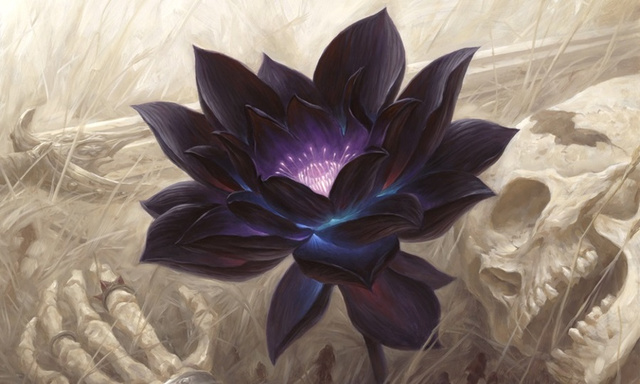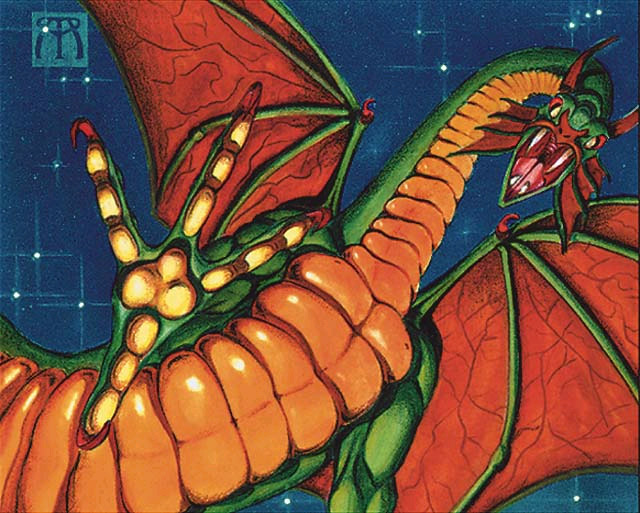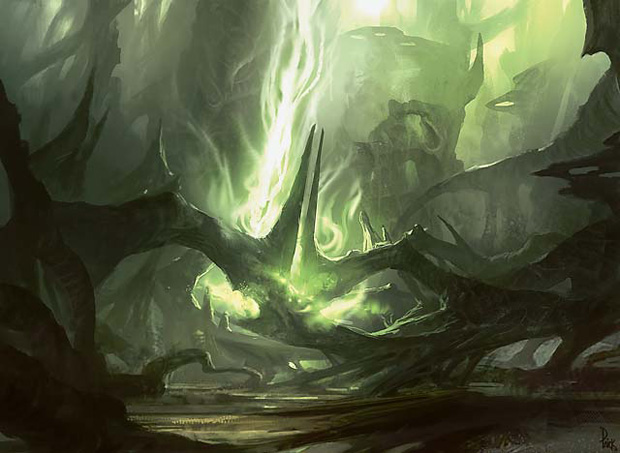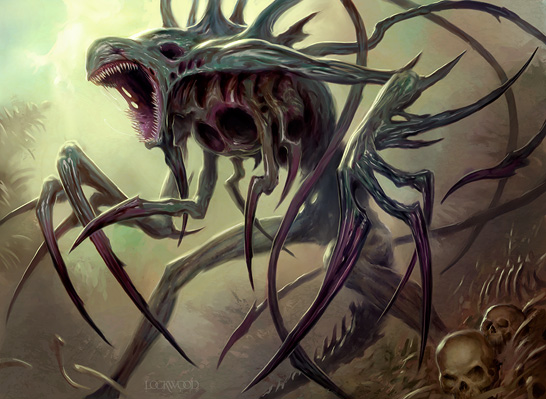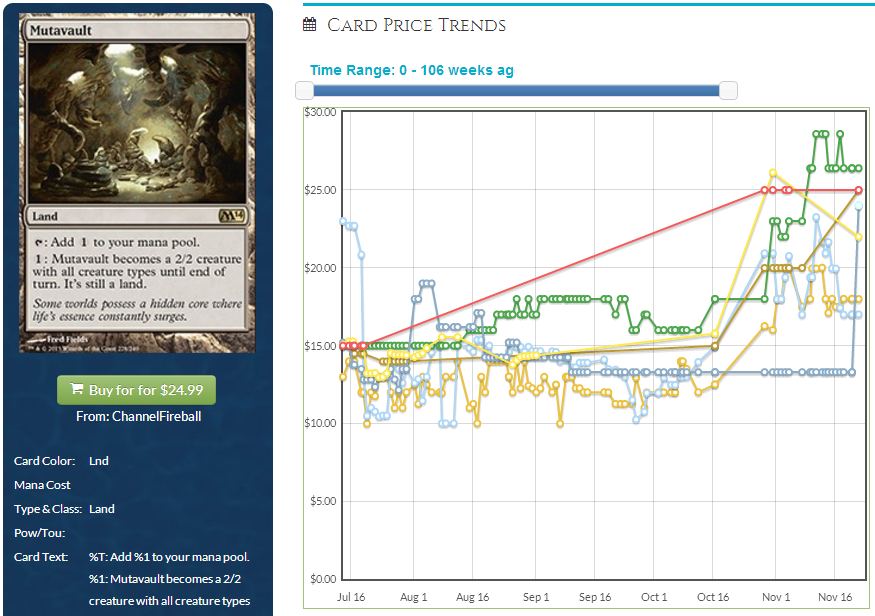EDITOR’S NOTE:
We have also been “asked” to remove Starcity prices form our site. We have pulled the prices for now.
The reason for removing the prices was simply that it wasn’t worth the time and effort required to keep up with their constant attempts to hide the data and they were almost NEVER the lowest prices vendor so the added gain to our users was very minimal.
On average, Starcity was 12% more expensive than almost every other vendor for almost every other card we looked at. Since each vendor is selling an identical good, sending people to SCG seemed silly.
That being said, some people still want SCG prices for comparison. Since mtgprice.com has some funding, we’re fortunate to have some excellent IP and Internet lawyers available to us (www.dlapiper.com). Rough advice from them follows (note: this is NOT advice to anyone else, it’s just me paraphrasing our own personal legal situation):
1. Price information is simply a statement of facts. You cannot copyright it. This is a 1991 Supreme Court decision. Relevant case law is here: http://en.wikipedia.org/wiki/Feist_v._Rural
In my opinion, for the C&D author to claim “such action may also constitute an infringement of SCG’s intellectual property rights” implies that one of the following statements is true:
a) They are a terrible lawyer that doesn’t understand basic case law.
b) They are lying.
c) They think the word “may” means “doesn’t in any way”.
2. Terms and Conditions on a website need to be affirmatively agreed to to be binding. If I added to the T&C on mtgprice.com “Anyone from starcitygames.com that visits this site owes me $1 Million USD per visit”, it would be irrelevant. (Even if they DID agree, it would be unconscionable but that’s besides the point). Importantly, we have been careful to never accept these terms and conditions (which is why we stopped offering buylist prices earlier this year).
3. The recent 3Taps/ Padmapper/ Craigslist ruling CAN make “circumvention” unlawful, however the exact definition of circumvention is hazy. The EFF has a nice writeup of this case here: https://www.eff.org/deeplinks/2013/08/court-rules-accessing-public-website-isnt-crime-hiding-your-ip-address-could-be
For us, we decided that the simplest possible thing to do would be to use Amazon Turk to crowdsource the pricing data. In other words, get real humans to connect to starcitygames.com and simply tell us how much they are charging for each card. Using Turk, we estimate that we could get every modern card’s price for less than $10/day. If there is demand for this, we will probably go this route since it both avoids all of the technological measures SCG are using and it’s 100% legal.
Please note: We have repeatedly offered Starcity free advertising for their data. We are also willing to pay directly for it, or to take any reasonable steps needed to limit any server load they may encounter.
Ultimately, we doubt this is about server load. We feel that Starcity simply don’t want people to be able to compare their prices as SCG prices are so frequently much more expensive than their competitors.
This is something we are willing to fight if it’s of benefit to our users. If you’d like to continue to see SCG prices on our site, please let me know at webmaster@mtgprice.com or post below.
ORIGINAL ARTICLE:
By: Jared Yost
How much power does Magic market information have when it comes directly from a market leader? To what extent are we willing to go to make sure that we are getting the best price for the cards that we trade or buy? To what extent are companies willing to go to protect their business data from being used in ways which they may not approve? A controversy has come to light surrounding these questions.
Recently, an interesting post has appeared on Reddit about Starcitygames (SCG) locking down the information on their website. A brief history of dawnglare is as follows. Reddit user dawnGlare created the website http://mtg.dawnglare.com, which is a price scraping tool used to display card prices for Magic cards. Some of you may remember the website ark42, which is what Dawnglare is based upon. It was the original Starcity price scraper that was used to quickly lookup sell prices, and was quite popular to boot. The owner of the ark42 website seemed to have a falling out with their local Magic community, which is explained in his monologue that has replaced the original website. I don’t think Starcity had any hand in ark42 shutting down like the current dawnglare situation. It operated for quite a while before it was shut down and it was a shame that such a wonderful contribution to the community is now dysfunctional because of a few bad apples.
Dawnglare is the replacement for the ark42 tool, with both of the websites utilizing similar, if not the same source code to display card names, prices, and mouse-over pictures of the cards. The tool has not been available too long; a few months at most. Like ark42, Dawnglare utilizes Starcity prices, and in addition have stated that their goal is to incorporate TCG mid prices for cards as well. The website is still functioning with only Starcity prices because it appears that the owner is seeking community input before they move forward with either improvements to the service or shutting it down.
This article is not providing input on whether or not they should keep the website, but rather analyzing the situation and providing commentary.
A summary about the case against Dawnglare:
-
Starcity sent a cease and desist letter to the Dawnglare site admin, which means that they are utilizing legal representation in order to enforce their data policy (in other words, they aren’t playing around once they get lawyers involved.)
-
Starcity quoted their website’s terms and conditions in the letter, which state that ANY type of information on starcitygames.com cannot be scraped programmatically
-
This point is important, because information defined here also includes the sell prices of the cards, not only just the buylist prices. Many people on the Reddit post were confused on this point because Dawnglare reads only the sell price, not the buylist for Starcity, which specifically carries a set of terms.
-
Starcitygames.com’s terms and conditions state that the user must agree to them
- This is interesting because there isn’t any agreement page that you need to go through before accessing the main website in order to see sell prices, unlike the buylist. However, though this may seem unintuitive, it could actually be the case that just using the website makes you subject to the Terms and Conditions. It could be argued either way.
-
Starcity stated that dawnglare has committed a breach of contract with the website for its automatic scraping
-
Staricty claimed that the sell price data on its website are valuable rights of the organization
-
Starcity gave the Dawnglare site admin until December 2nd, the date of this article publication, to comply with their demands or face legal recourse
-
Starcity mentioned that legal disputes can only be fought in a court in Roanoke, VA, where their physical store is located
-
I’m not sure about state law in regards to the internet, though it would definitely be weird to go to court with this if the Dawnglare site admin is not located in VA
Let me say this now – I am only providing my opinion on this controversy based on the details outlined by Dawnglare on the original Reddit post. I have no idea if the Dawnglare site admin altered the letter Starcity sent them in any way nor do I have any way of knowing if Starcity will continue with their legal recourse for the Dawnglare price tool. I simply wish to start a conversation with players about how far organizations are willing to go to protect their data about real-time card prices, even if the data seems innocuous. Moving forward, this can also lead to implications about access to financial data of cards.
First, let me address one issue at hand – Starcity wishing to protect their data from a technological perspective. As an organization, especially one with a detailed terms of service expressly forbidding certain actions, they have a right to protect their business interests if they feel it will affect them in a negative way.
How can a price scraping tool affect Starcity negatively? A major concern is that external sites could cause a massive strain on server resources for Starcity, such that if several tools like Dawnglare are scraping their website for information it could hamper the website’s response speed. If any of you have used the Starcity deck database search or advanced card search, you can already see that their searches are somewhat slow. It can take quite a while to return a results from an advanced search. With so many users already searching the database, adding a scraping tool that is constantly pinging the database only stands to make things worse.
Of course, you could argue that Starcity should upgrade their servers and increase their bandwidth to the website to eliminate these problems, which would negate the effects from any tool that would also scrape the information (think Google, Amazon,or any other big name retailer – programs scrape their information all the time and it does affect the website’s speed). Unfortunately, Starcity is either not in the position to do this or is allocating their budget elsewhere, which means trying to cut bandwidth costs in other ways.
If Starcity uses legal recourse to cut server bandwidth overutilization rather than put the funds towards upgrading their server capacity, which could be argued to be the cornerstone of their business then there may be other motivating factors at work. This leads me to believe there are business considerations for going after tools like Dawnglare. I am not alone in this analysis of the cease and desist letter.
The other reading of the situation is that Starcity is not only protecting their data from a technological perspective, they are also protecting their data from a business perspective. This issue is centered around whether or not Starcity went too far in persecuting Dawnglare for creating a tool to scrape their prices. From a legal perspective, could you define any type of data on your website as “valuable rights of the organization”? Is the information considered public or private if anyone with an internet connection and the website address can access the information? Whether or not it is public is not up to me to determine, only someone with a better understanding of business and internet law can make that determination. When looking at the website though, anyone can access Starcity’s sell prices- all you need to do is go to starcitygames.com and and start typing.
Even this set of questions brings up another question – does this mean that you are already agreeing to Starcity’s terms of service just by executing searches against the information that they make available on their website? Since you don’t have to actively agree to anything in order to just search for the sell prices, this could definitely be contentious when arguing whether or not issuing a cease and desist is the right call.
After considering all the information as we have it, the next issue is whether or not a programmatic search through a tool like Dawnglare, even though it may execute hundreds or thousands of searches per minute, has the same rights and merits as a manual search executed by a single user. It could actually boil down to the rights of the user to access a particular amount of data on the website, measured in kilobytes, which is really the only difference between the tool and a normal website user. If the tool really is causing negative harm to Starcity (for example having them complete extra server maintenance due to all the extra searches from a single source) then there is an argument to taking down the tool – after all, DDOSing a website is a real thing and can wreak massive havoc on any web service.
From the community’s perspective on all this, Starcity does not appear to be operating any slower than usual, so there must be something going on behind the scenes that Starcity does in order to balance out the extra load from the scraping tools. Maybe not though. It could just be that they are trying to protect what they perceive as their business model.
Circling back to the cease and desist, the real issue is that Starcity is trying to stop application scraping of their website through third party applications and whether or not their outlined legal explanation (as per user dawnGlare on Reddit) is powerful enough to stop this type of behavior in the future. Since I a not a lawyer, I can’t give a grounded legal argument for continuing or discontinuing the scraping of information that is outside of the website’s terms of service, but it is interesting at this point in time that Starcity is cracking down on applications. I’m not even sure if Dawnglare is the first site they’ve contacted about this issue. There could be others out there who have decided to shutter their applications once they received the letter.
In addition, I think it is intriguing that Starcity is choosing to enforce their rights against someone who is not just scraping buylist prices, but sell prices as well. I’m not sure why the sell price in particular needs to locked down. In order to access buylist prices for Starcity you need to log into the website and agree to their terms by clicking a specific button. This can easily be linked to agreeing to their terms of service – the terms are on the prompt before the buylist. Whether or not this information should also be heavily protected behind this type of agreement can also be debated, since the buylist information can also technically be accessed by anyone because technically anyone can create an account with Starcity and access the buylist. Starcity most likely put that road block in place in order to easily shut down accounts that were created strictly for applications that intend to scrape buylist information.
The real root question here is why does Starcity care so much about people mining its sell price information? Do they have so much sway that if they change their sell prices it could possibly create a market-wide shift, ultimately interfering with their business practices? I will definitely be following this case in the future to see what happens, because the outcome could have major impacts on the way that people access card price information if other organizations follow suit.
The outcome of the Dawnglare website cease and desist notification will have implications for buylists and possibly more going forward. It might even spark conversation on the power that Starcity wields over the market and the lengths that they will go to protect their market position. It could also mean that in the future other stores may start locking down their website information, which further and further separates the movements of big box Magic stores from the community. I’m personally against restricting access to information, however with private organizations my opinions don’t matter and at the end of the day. It comes down to the fact that an organization should have a way to protect their data.
But how far is too far? I think that is question that everyone is trying to answer, in order to find a happy medium between Starcity operating as a business and other third-party tool creators wanting to use their data in order to create more valuable applications for the Magic community. After all, we all love this game – we all want to see it succeed both through Wizards and the stores that support them. I hope that both parties are able to resolve the dispute amicably and in a way that still benefits the Magic community at large.
